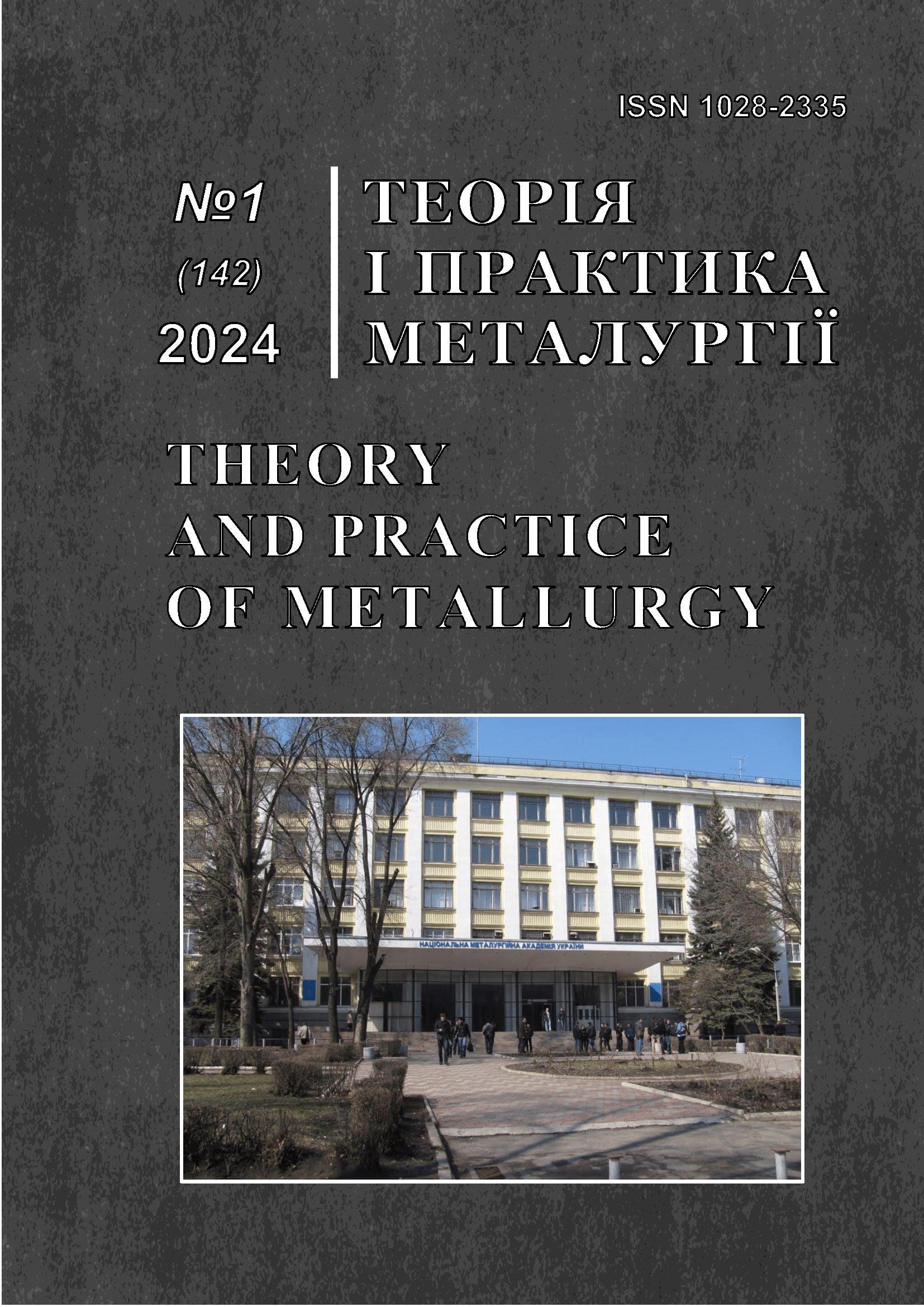Study of properties of sintered chrome-nickel-niobium steel
DOI:
https://doi.org/10.15802/tpm.1.2024.08Keywords:
stainless steel, chrome, nickel, corrosion resistance, powder, sinked productsAbstract
Goal. Conducting an analysis of modern technologies for the production of powder materials for additive manufacturing technologies, determining their key characteristics and clarifying the impact of production on the final quality of products under given operating conditions. Study of the mechanical properties and corrosion resistance of a sintered chrome-nickel-niobium steel product made by additive technology. Method. Theoretical and experimental studies of samples of sintered powder steels according to ISO 2738, ISO 4003 for powders, as well as for mechanical properties of samples according to ISO 3325:2017; ISO 3928:2014; ISO 6892:2019; ISO 6506-1:2019. The results. The mechanical properties and corrosion resistance of sintered chrome-nickel-niobium steel under the specified operating conditions of the products were studied. The effect of porosity on the heat resistance and mechanical properties of sintered materials during the production of products by the Selective laser melting method was established. Scientific novelty. Obtaining new information regarding the mechanical and heat-resistant characteristics of steels proposed for additive technology at elevated temperature conditions of product operation. Elucidation of the effect of contacts of sintered powder particles on the mechanical properties of the powder product. Practical significance. It has been established that sintered materials containing a greater number of heat-resistant components have lower open porosity and are more corrosion-resistant at elevated temperatures. Proposed technological methods of increasing the corrosion resistance of sintered chromium-nickel-niobium steels. Expansion of the range of powder materials for additive technologies.
References
Kumar, S. & Kruth, J. P. (2020). Additive Manufacturing: Applications and Innovations. Singapore Springer
Tofail, S. A., Koumoulos, E. P., Bandyopadhyay, A., Bose, S., O’Donoghue,L., & Charitidis, C. (2018). Additive manufacturing: scientific and technological challenges, market uptake and opportunities. Materials today, 21(1), 22-37
Callister, W. D. (2018). Materials Science and Engineering: An Introduction. Wiley
Levy, G. N., Schindel, R., & Kruth, J. P. (2003). Rapid manufacturing and rapid tooling with layer manufacturing (LM) technologies, state of the art and future perspectives. CIRP Annals, 52(2), 589-609
Srivatsan, T. S., & Sudarshan, T. S. (2015). Additive Manufacturing: Innovations, Advances, and Applications. CRC Press
Gao, M., Li, L., Wang, Q., Ma, Z., Li, X., & Liu, Z. (2021). Integration of additive manufacturing in casting: advances, challenges, and prospects. International Journal of Precision Engineering and Manufacturing-Green Technology, 1-18
Gu D. D., & Meiners W. (2019). Laser Additive Manufacturing of High-Performance Materials. Berlin Springer
Powder metallurgy – the basis of 3D metal products. https://metinvest-smc.com/ua/articles/poroskova-metalurgiia-osnova-3d-druku-metalevix-virobiv/
Zäh, M. F. & Lutzmann, S. (2015). Proceedings of the 26th Annual International Solid Freeform Fabrication Symposium – An Additive Manufacturing Conference. (pp. 123-125). University of Texas at Austin
Bai, J., & Zhang, Y. (2021). Recent advances in the development of metallic powders for additive manufacturing. Journal of Materials Science and Technology, 49, 65-76.
Fedorchenko, I. M. et al. (1985). Powder metallurgy. Materials, technology, properties, areas of application: reference book. Nauk. Dumka
Zhuk, N. P. (1968). Corrosion course and protection of metals. Metallurgy
Davidenkova, A. V. & Radomyselsky, I. D. (1979). The technology of obtaining the properties of structural parts from copper powders. Moscow.
Radomyselsky, I. D. (1982). Production and use of powder materials in light industry. (pp. 124-126). Kyiv
Radomyselsky, I. D., Serdyuk, G. G., & Shcherban, N.I. (1985). Structural powder materials. Tekhnika
ASTM F2924-14. (2014). Standard Specification for Additive Manufacturing Titanium-6 Aluminum-4 Vanadium with Powder Bed Fusion. ASTM International
Downloads
Published
How to Cite
Issue
Section
License
Copyright (c) 2024 Holub I.V., Nosko O.A., Koval D.O., Kovzik A.M., Kushnir Yu.O.

This work is licensed under a Creative Commons Attribution 4.0 International License.
Authors retain copyright of the published papers and grant to the publisher the non-exclusive right to publish the article, to be cited as its original publisher in case of reuse, and to distribute it in all forms and media. Articles will be distributed under the Creative Commons Attribution 4.0 International (CC BY 4.0) licence.
Authors can enter the separate, additional contractual arrangements for non-exclusive distribution of the published paper (e.g., post it to an institutional repository or publish it in a book), with an acknowledgement of its initial publication in this journal.




